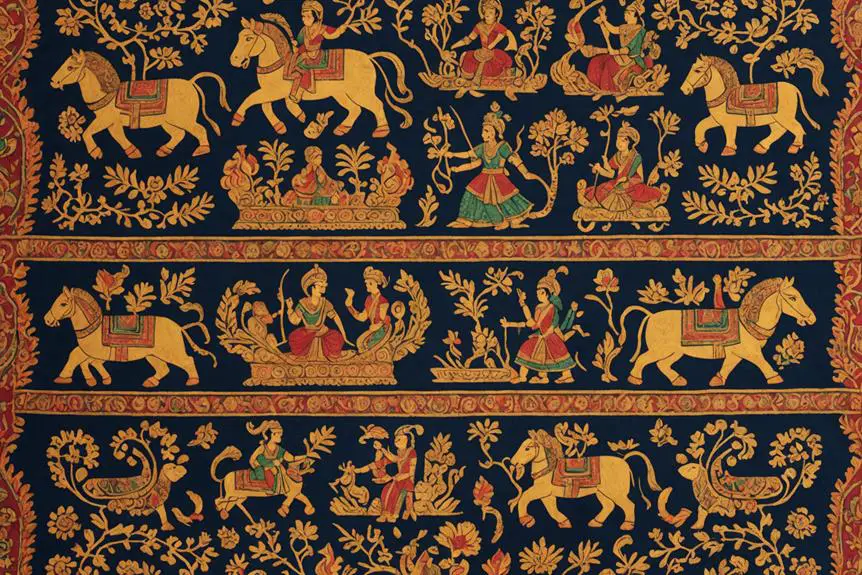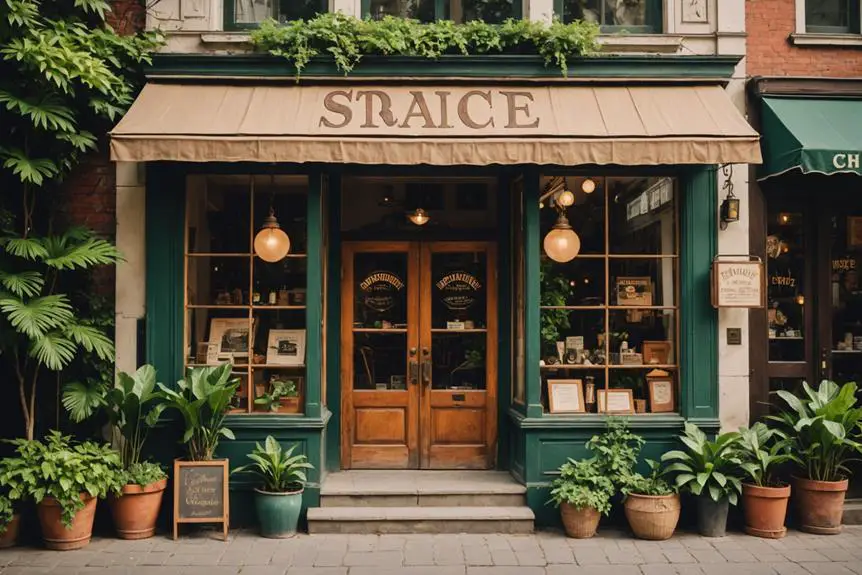When you're trying to identify authentic Baluchari fabric, start by examining the long pallu, where intricate rectangular designs unfold stories from Hindu epics. You'll notice the borders adorned with meticulously arranged motifs, hinting at the skilled craftsmanship involved. As you feel the luxurious silk, pay attention to the rich texture and the presence of extra weft threads. But this is just the beginning; understanding the weaving techniques and cultural significance can further enhance your appreciation of Baluchari. What else might you discover about this exquisite fabric that adds to its allure?
Characteristics of Baluchari Fabric
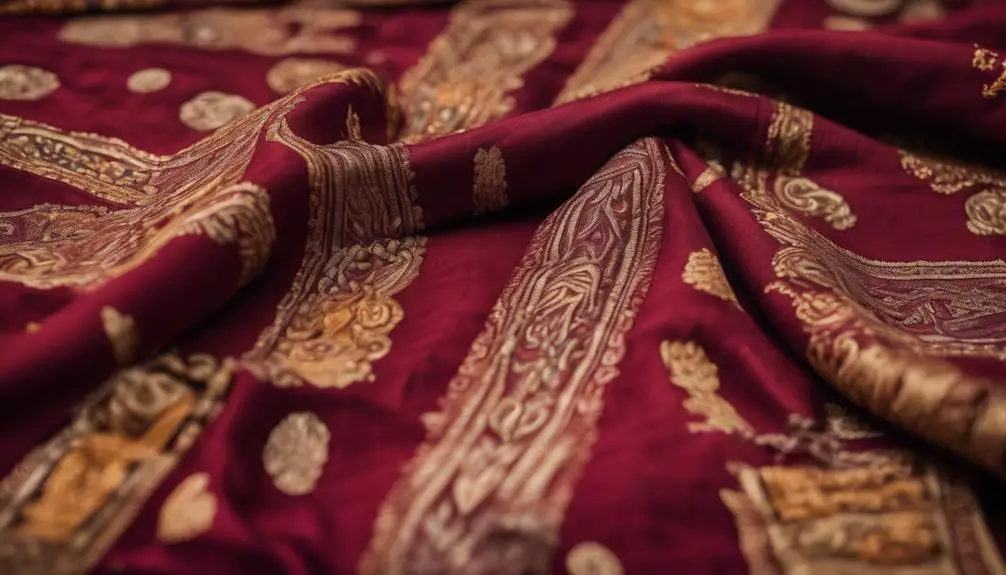
Baluchari fabric stands out for its luxurious silk texture and elegant appearance. When you first see it, you can't help but admire its rich feel and vibrant colors. This fabric, hailing from Bengal, is known for its intricate designs that often depict mythological scenes from epic stories like the Ramayana and Mahabharata. Isn't it fascinating how art can tell a story?
One of the most distinctive features of Baluchari is the pallu, or anchal. Unlike other sarees, the pallu showcases elaborate patterns that are arranged in rectangular corners, adding a unique flair. You'll also notice that the traditional patterns on the fabric are crafted using jacquard weaving, a technique that allows for detailed designs and high-quality fabric.
Creating a piece of Baluchari isn't quick; it typically takes about 7-8 days of hard work from skilled artisans. Can you imagine the dedication involved in the weaving process? Each thread is carefully placed, and the intricate designs come to life, making every piece a work of art.
If you're looking for a luxurious fabric that combines history, culture, and craftsmanship, Baluchari should be at the top of your list. So, next time you see a Baluchari saree, take a moment to appreciate its beauty and the stories it holds. It's not just fabric; it's a celebration of tradition and artistry!
Historical Background of Baluchari
Emerging from the rich tapestry of Bengal's history, Baluchari sarees trace their roots back to the 18th century in Murshidabad. Can you believe these stunning sarees gained prominence thanks to the patronage of Nawab Murshid Quli Khan? The weaving techniques used in Baluchari sarees were meticulously refined, especially after the craft moved to Bishnupur following a devastating flood in the Ganga. It's fascinating how adversity can lead to artistic evolution, right?
The oldest preserved Baluchari saree dates back to the 1750s and is proudly showcased in a museum in London. This really highlights the longevity of this textile tradition! Unfortunately, during British rule, many artisans had to abandon their craft, which was a real blow to Bengal's artistic heritage. But don't worry, the early 20th century saw a revival, thanks to master weaver Akshay Kumar Das, who reignited the passion for Baluchari.
Now, these sarees aren't just pieces of clothing; they're significant cultural artifacts! Often gifted during weddings and important life events, they carry stories, emotions, and a rich history. So next time you see a Baluchari saree, remember you're looking at a piece of history, a celebration of art, and the hard work of artisans who poured their heart and soul into every thread. Isn't that just amazing? Baluchari sarees truly are a reflection of the enduring textile tradition of Bengal!
Identifying Authentic Baluchari Sarees
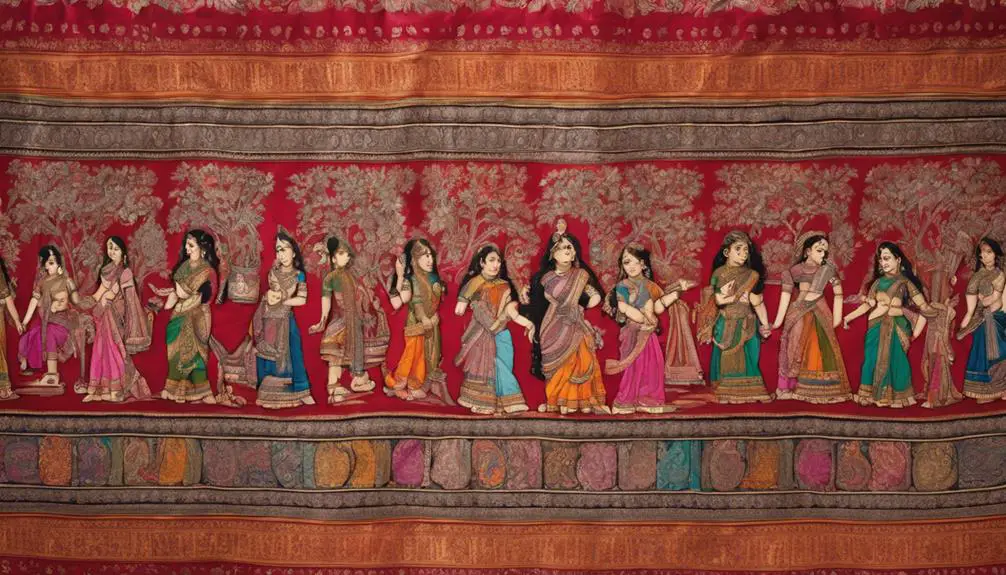
When you're on the hunt for authentic Baluchari sarees, paying attention to specific details can make all the difference. First off, take a close look at the long pallu. Real Baluchari sarees feature beautifully arranged rectangular designs, often telling stories from the Ramayana and Mahabharata. Isn't that just amazing?
Next, check out the borders. Genuine Baluchari sarees showcase intricate storytelling motifs, with designs that are neatly arranged. It's like wearing a piece of art! You'll also want to feel the fabric. Authentic Baluchari sarees are made of luxurious silk, and the texture should feel rich and smooth in your hands.
Don't forget to look for the craftsmanship that West Bengal artisans are famous for. If you see extra weft threads in the pallu, borders, and body, you've likely found a genuine Baluchari. These threads add to the beauty and complexity of the saree, making it a true masterpiece.
Also, remember that traditional weaving techniques, like the Jala method, are essential for preserving the artistry of Baluchari sarees. If a saree feels a little too stiff or has a machine-made look, it's probably not authentic.
Cultural Importance of Baluchari
Sarees hold a special place in Indian culture, and the cultural importance of Baluchari sarees is particularly striking. Originating from the Murshidabad district of West Bengal, these stunning garments aren't just pieces of fabric; they're a celebration of cultural heritage! With their intricate designs, Baluchari sarees tell beautiful stories from Hindu mythology, often depicting scenes from the epic tales of the Ramayana and Mahabharata.
Did you know that these sarees were once a fashion statement for royal families? Yep, they symbolized wealth and high social status! Even today, wearing a Baluchari saree during festivals or weddings is a way to honor that rich tradition. But here's the great part: the revival of interest in these sarees is helping local artisans thrive. When you choose a Baluchari, you're not just dressing up; you're supporting traditional craftsmanship and the local economy.
Recognized as a geographical indication in India, Baluchari sarees truly encapsulate the artistic heritage of Bengal. They're more than just textile art; they're a piece of history you can wear! So, the next time you see those intricate patterns, remember that each saree carries a legacy. Isn't that amazing? By embracing Baluchari sarees, you're connecting with a vibrant culture, making a fashion statement, and keeping a timeless tradition alive. What could be better than that?
Care and Maintenance Tips
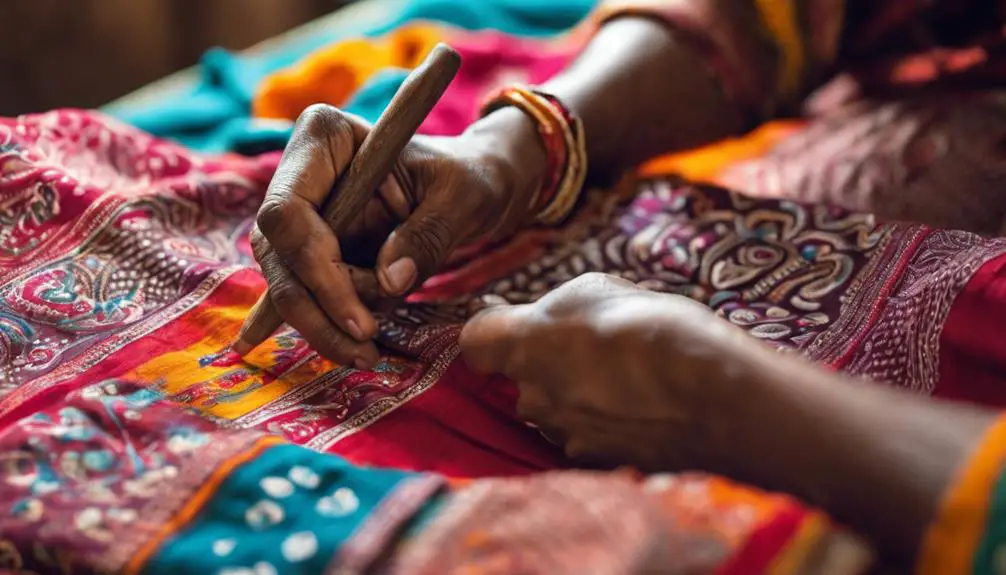
Wearing a Baluchari saree connects you to a rich tradition, but to keep that connection strong, proper care and maintenance are key. After all, you want your beautiful saree to last and shine, right? Here are some essential tips to help you preserve its beauty:
- Avoid frequent washing: Washing your Baluchari saree too often can strip away its natural oils, which affects the fabric's luster. Trust me, less is more!
- Hand wash with care: When you do wash it, always hand wash with a mild detergent. Be gentle! Avoid pulling or stretching the fabric when it's wet to maintain its integrity.
- Drying tips: After washing, dry your saree in a shady area, away from direct sunlight. This prevents fading and keeps those intricate designs looking stunning.
- Iron on low heat: When it's time to press your saree, make sure it's completely dry and use a low heat setting. High temperatures can harm the delicate silk fibers and motifs.
Lastly, remember to store your Baluchari saree in a clean, dry place, ideally wrapped in muslin or cotton cloth. This protects it from moisture and pesky insects. With these care and maintenance tips, you can keep your Baluchari saree looking fabulous for years to come. So, are you ready to give your saree the love it deserves?
Frequently Asked Questions
How to Identify a Baluchari Saree?
When you're trying to identify a Baluchari saree, think about its rich history and unique weaving. Look for intricate motifs that tell stories from epic tales—those designs are incredible! Check the draping; it should flow beautifully. Don't forget the care these sarees need; they're made by skilled artisans. Explore local markets for the latest trends, and maybe catch a festival showcasing Baluchari's beauty. Isn't that exciting? You'll definitely stand out!
What Are the Characteristics of Baluchari?
Baluchari's got a rich history, don't you think? This fabric showcases stunning traditional motifs, telling tales of culture and heritage. The weaving process is an art, crafted by skilled Baluchari artisans who guarantee durability. You'll love how it drapes beautifully, whether for a festive occasion or a casual outing. Plus, regional variations add unique flair! When caring for it, just follow basic guidelines to keep those contemporary designs looking fresh. Isn't that amazing?
What Is the Difference Between Baluchari and Swarnachari?
So, what's the difference between Baluchari and Swarnachari? Well, Baluchari sarees are all about storytelling, showcasing intricate motifs from epic tales through skilled Baluchari artisans. Meanwhile, Swarnachari sarees shine with luxurious gold threads that make them stand out during festivals. The Baluchari weaving technique highlights craftsmanship, while the Swarnachari market focuses on elegance. Both are rooted in Baluchari history, but the flair of gold gives Swarnachari that extra festive pop! Isn't that cool?
What Are the Colours of Baluchari?
When you think of Baluchari sarees, vibrant colors instantly come to mind! You'll see deep reds, emerald greens, and royal blues, often paired with gold threads. These colors aren't just pretty; they reflect cultural significance and traditional patterns. Modern adaptations have introduced softer pastels too! Each hue enhances the stunning design motifs, making them pop. And hey, don't forget that these sarees are durable, so with a little care, they'll last ages!
Conclusion
So, there you have it! Identifying authentic Baluchari fabric isn't just about checking off a list; it's like unraveling a beautiful story woven in silk! From the intricate designs to the luxurious feel, each piece is a treasure. Next time you spot a Baluchari saree, you'll know just what to look for. Isn't it exciting to plunge into the world of textiles? Happy fabric hunting, and may your wardrobe be filled with stunning stories!
